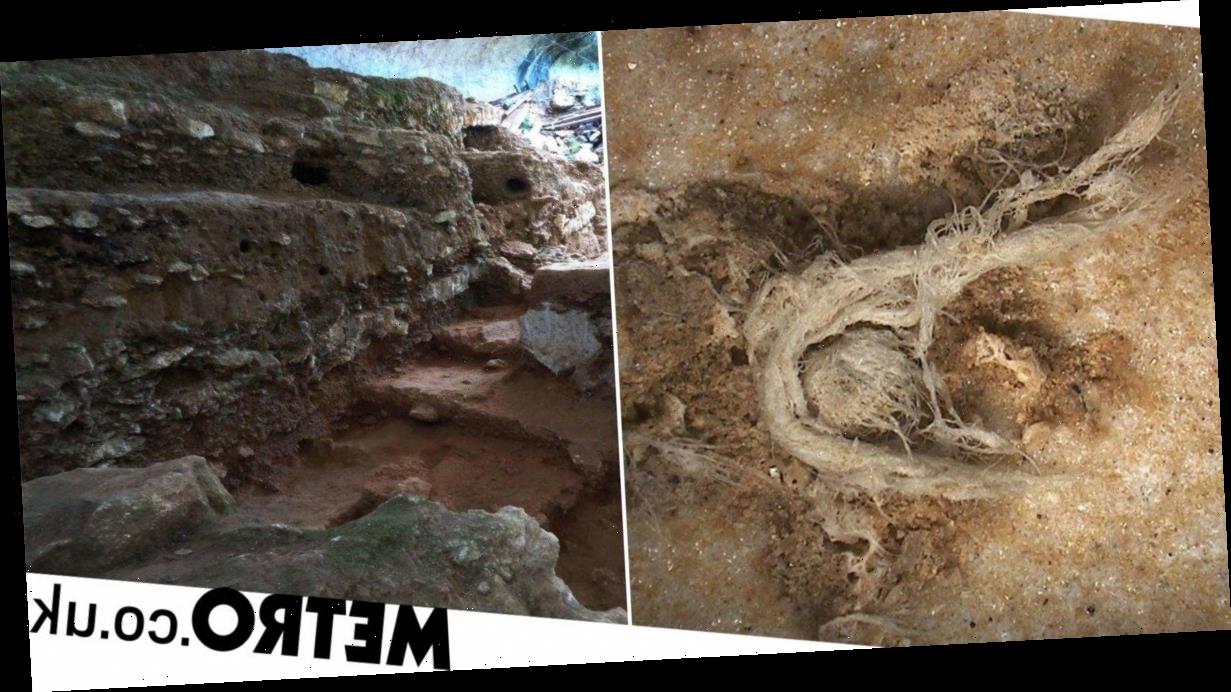Archeologists claim to have busted the myth that Neanderthals were far less intelligent than early Homo Sapiens after finding the world’s oldest piece of string.
The team behind the amazing find, a tiny fragment of twine on a small flake of flint, say it shows our ancient ancestor had a complex understanding of plants and maths.
The short piece of twine, made from the fibrous insides of a Pine tree, is the oldest known evidence of textile making and could have been used to construct clothing, rope, bags, nets, mats, and boats.
Based on the 40,000-year-old string, the researchers go so far as to say ‘it is difficult to see how we can regard Neanderthals as anything other than the cognitive equals of modern humans.’
An international team, including researchers from the Centre National de la Recherche Scientifique (CNRS) in Paris, discovered the cord on a flint fragment from the prehistoric site of Abri du Maras in the south of France.
Over the last two years they have been using microscopic analysis to show that these remains had been intertwined – proof it had been put together by humans.
Photographs revealed three bundles of twisted fibres, plied together to create one cord. In addition, analysis revealed that these strands were made of cellulose, probably from the inside of coniferous trees.
Dr Marie-Hélène Moncel, director of research at the National Museum of Natural History in Paris, said: ‘We were able to uncover details about these fibres and we observed that they’re different, twisted fibres. It was not possible in nature to find this kind of fibre.
‘Now we are sure that these twisted fibres are not due to a natural process.
‘We can imagine that this twisted fibres could be the remains of a cord of something you could use it for making bags.’
Dr Moncel added that to know when and how to harvest the fibres would have required advanced knowledge of the plants in their environment.
She said: ‘Neanderthals are different but had the same capabilities. He was able to survive in different climates and environments for a long time.
‘It’s not surprising for me that Neanderthal is able to use the plant world.
‘Now we have a lot of information about the mineral world and stone tools because that’s whats preserved at Neanderthal sites but we are starting to see that the plant world was a large part of their world.
‘In my opinion, different things can be related to this discovery; obviously the ability to make cord but also a huge knowledge about the trees and different parts of trees.
‘They had a huge knowledge about the vegetation around the site and the clever behaviour to use everything around the site – the plants, the trees, and to use these different parts of the environment.’
‘The cord fragment from Abri du Maras is the oldest direct evidence of fibre technology to date.
‘Its production demonstrates a detailed ecological understanding of trees and how to transform them into entirely different functional substances.
‘Fibre technology would have been an important part of everyday life and would have influenced seasonal scheduling and mobility. Furthermore, the production of cordage implies a cognitive undestanding of numeracy and context sensitive operational memory.’
Study lead author Prof Bruce Hardy, of Kenyon College in the United States, said: ‘The cord, and fibre technology in general, is an example of an infinite use of finite means.
‘You start by twisting a set of fibres into a strand of yarn. Multiple yarns are twisted to form a cord, multiple cords to form a rope, et cetera.
‘We cannot make a rope without the preceding steps. In that way, fibre technology is very similar to language.
‘We can’t have a sentence without words, we can’t have words without sounds that convey meaning. Thus, the cognitive abilities for making string and rope are very similar to those for making language.
‘This speaks to the cognitive abilities of Neanderthals. As recent ancient DNA evidence shows, modern humans and Neanderthals interbred regularly. They couldn’t have been so different from us
‘At present, this is the oldest direct evidence of string. That doesn’t mean that it is the first time it was ever made. I suspect the technology goes much further back.
‘Strings and rope can be used in many ways, tying tools onto a haft, snares, bags, nets, et cetera.
‘Fibre technology in general is foundational in our society. From strings and ropes to tie things together clothing and even to twisted wires used as cables in construction of modern buildings.
‘In this case, use as a binding to attach a tool to handle, or as parts of snares, bags, or nets are likely possibilities.’
He added: ‘Neanderthals are a group that are typically defined by their extinction.
‘Because we don’t see Neanderthals walking down the street with us, we assume that they must have done something wrong. Therefore we tend to look for deficiencies rather than strengths.
‘This evidence suggests that they are not terribly different from us in the way they thought and navigate the world.’
The findings were published in the journal Nature Research.
Source: Read Full Article

